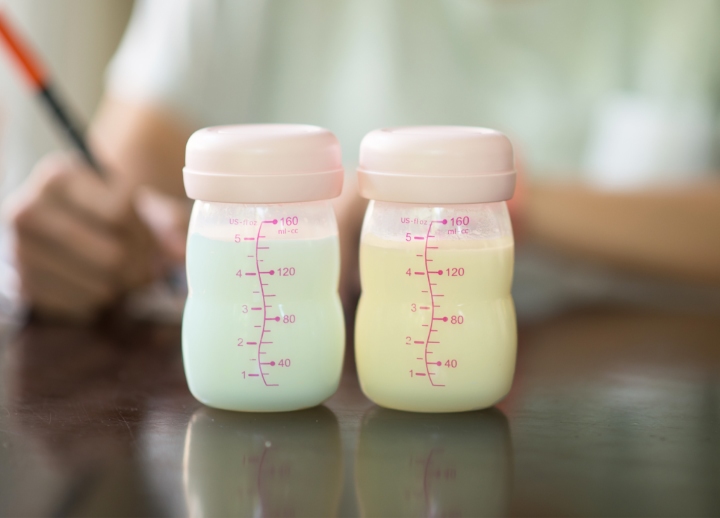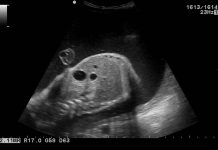The first food of a baby when he is born is his mother’s breastmilk. Breastmilk provides balanced nutrition and better immunity. Composition of a mother’s milk changes throughout a feeding. So, some mothers are concerned that their babies may not enough of the hindmilk, which is high-fat milk.
The following article describes the causes and symptoms of foremilk and hindmilk imbalance.
Foremilk and Hindmilk
Consistency of breast milk changes throughout a feeding. The first milk is called foremilk. Foremilk can be compared to skim milk because it is low in fat and calories.
The milk turns into hindmilk as the feeding progresses. The hindmilk is like whole milk. This milk has a higher fat content and is thick in texture. For babies, hindmilk is like the dessert which finishes off a meal.
What is a Foremilk and Hindmilk Imbalance?
When a baby receives a lot of foremilk at the beginning of a feeding and does not drink the remaining hindmilk, it creates a foremilk and hindmilk imbalance.
If a baby is not getting enough hindmilk, then it is a matter of concern for mothers. Due to this, the baby’s ability to feel satisfied with each feeding and weight gain is affected. The amount of lactose is relatively consistent throughout a feeding, but there is more lactose in foremilk as compared to hindmilk. So, a baby may get extra lactose if there is an oversupply of foremilk.
What Causes Imbalance Between Foremilk and Hindmilk?
Breastfeeding is the best way, which offers a good mixture of foremilk and hindmilk to the baby, allowing good digestion and quick nutrition. When a baby is hungry and tries to drink milk quickly, then milk doesn’t get time to mix properly, which leads to higher consumption of foremilk as compared to hindmilk.
Symptoms of Foremilk and Hindmilk Imbalance
Signs of imbalance between foremilk and hindmilk are as follows:
- Presence of blood along with baby’s poop
Due to frequently passing gases, anus of babies become tender and intestines are stretched more than required. This can lead to blood spots in babies poop. This can be due to undue pressure on the digestive system, which is because of an imbalanced proportion of milk.
- Consistent and Repetitive digestion problems
Problems related to the digestive system are present in babies when there is milk imbalance. Doctors notice that babies fart frequently and may even burp more than usual.
- The delayed increase in weight
Breastmilk helps a baby in weight gain, and it is the hindmilk that plays an important role in this. If there is an imbalance in milk proportion, then there is a delayed increase in the weight of a baby.
- Presence of a Diaper Rash
The nature of milk changes when there is an imbalance between foremilk and hindmilk. The milk then becomes slightly acidic, which is not good for a baby. This can lead to troublesome poop, due to which there is the presence of diaper rashes.
- Stomach Aches
Due to milk imbalance, there is presence gas in the stomach which can easily become painful and results in colic attacks. Muscles of the stomach may also tighten, which causes a baby to cry loudly. There can be slight swelling in the belly of the baby when the gas fails to pass out successfully.
How to Deal With Foremilk and Hindmilk Imbalance?
There are some easy ways which can help to resolve the foremilk and hindmilk imbalance, and these are:
- Give time and patience to the Breastfeeding
Breastfeeding is new for many mothers and all babies. So, time schedules and positions should be adjusted according to each other. A mother should be patient with the baby and herself so that the breastfeeding can be comfortable for both of them.
- Pump out a little milk before breastfeeding
Foremilk usually flows out before hindmilk. So, if a baby tends to get full foremilk then a mother should pump out a little milk breastfeeding a baby. This will correct the imbalance between foremilk and hindmilk and give the right kind of nutrition to the baby.
- Take a break during breastfeeding cycle
Mothers usually choose to finish the milk of one breast before switching to the next one. During this, a break should be taken before continuing the feeding. By doing this a baby will be able to feed for a longer time and get a good proportion of hindmilk.
- Try out a different breastfeeding position
To correct milk imbalance, some breastfeeding positions are recommended. When a mother lies on her side, milk flow improves and this also helps a baby to take a tiny nap in the middle of a feeding and allows him to drink more. Alternatively, when a mother lies down and places her child on top, a baby gets more control over the feeding.
- Extend the duration of feeding
During breastfeeding the foremilk kick starts the appetite while the hindmilk serves the major meal proportions. Biologically, the hindmilk takes some time to start flowing out from the breast. Therefore, if a mother extends the duration of feeding, she can provide a good meal to the baby every time.
Myths Regarding Foremilk and Hindmilk Imbalance
Following are some myths and facts regarding foremilk and hindmilk imbalance:
- Myth- If a baby farts constantly and has green-coloured poop, then it is a clear sign of overconsumption of foremilk.
Truth- These symptoms can be due to some other issues.
- Myth- If a baby is not gaining weight according to age, then it is due to milk imbalance.
Truth- If the child is not drinking enough milk, then there is no weight gain because the weight gain of the baby depends on the total milk consumption.
- Myth- Chances of consumption of foremilk increases when feeding a baby is done frequently and constantly.
Truth- An ample amount of hindmilk is provided to the baby through continued breastfeeding.
The baby will begin to consume hindmilk in consecutive feedings and can have good input of nutrition in the form of both calories and fat.s
When to See a Doctor?
When a baby continues to have colic attacks, decreased weight gain, and a continued sense of irritability then a mother should consult a doctor and look for possible lactose intolerance and other illnesses.
By maintaining the appropriate breastfeeding practices, chances of milk imbalance can be reduced. Because breastfeeding is the mutual activity between the mother and the baby, the mother should let her baby drink milk to his fill.
References:
https://www.ncbi.nlm.nih.gov/pmc/articles/PMC5673630/













